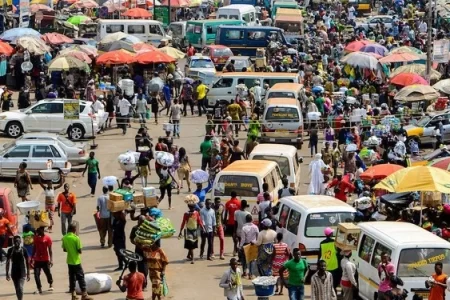The African Development Bank (AfDB) has outlined the significant financial requirements for Ghana’s structural transformation in its 2024 Country Focus Report.
The report emphasizes that Ghana needs to mobilize $4.87 billion annually until 2030 for the Sustainable Development Goals (SDGs) and an additional $0.85 billion annually until 2063 for the African Union’s Agenda 2063.
Currently, the country has only secured a third of this necessary funding.
Tax-to-GDP Ratio Needs To Increase
To meet these ambitious targets, the AfDB recommends that Ghana increase its tax-to-GDP ratio by 3.8 percentage points for the SDGs and by 0.7 percentage points for Agenda 2063.
Furthermore, the report advocates for allocating more resources to critical sectors such as education and energy to facilitate structural change.
Business Environment and Urbanization Key to Investment
The report, themed “Driving Ghana’s Transformation: The Reform of the Global Architecture,” also underscores the need for a more business-friendly environment to attract both domestic and foreign investment.
Additionally, it suggests that a coherent urbanization framework could accelerate structural transformation, enhancing the overall economic landscape.
Challenges in Structural Transformation
The AfDB report identified several factors impeding Ghana’s structural transformation. These include the concentration of jobs in less productive sectors such as personal services, agriculture, and retail, and the underutilization of favorable factors like institutional quality, export diversification, infrastructure, human capital, and urbanization.
The report also highlighted the dominance of the informal sector, vulnerability to climate change, limited access to credit, and a high youth NEET (Not in Education, Employment, or Training) rate as significant bottlenecks.
Economic Growth and Stability Concerns
Ghana’s economy, which transitioned to lower middle-income status in 2010, has shown signs of instability recently. The post-COVID-19 recovery has been sluggish, with real GDP growth slowing from 5.1 percent in 2021 to 3.8 percent in 2022, and an estimated 2.9 percent in 2023.
The economic downturn has been exacerbated by macroeconomic instability, tightening global financial conditions, and multiple external shocks, leading to a sharp depreciation of the Cedi and a debt crisis in December 2022.
Recommendations for Macroeconomic Stability
The AfDB report urges Ghana to pursue reforms aimed at bolstering macroeconomic stability and supporting structural transformation efforts.
It calls for monetary, budgetary, and exchange rate policies to control inflation, stabilize exchange rates, reduce public deficits by rationalizing spending, and mobilize more internal resources.
Additionally, the report recommends improving public sector development initiatives, fast-tracking debt restructuring, enhancing access to concessional finance, deepening financial markets, and strengthening stakeholder engagement for development assistance.
By implementing these measures, Ghana can aim to achieve sustainable growth and structural transformation, positioning itself among the best-performing developing countries.
Source:norvanreports.com

